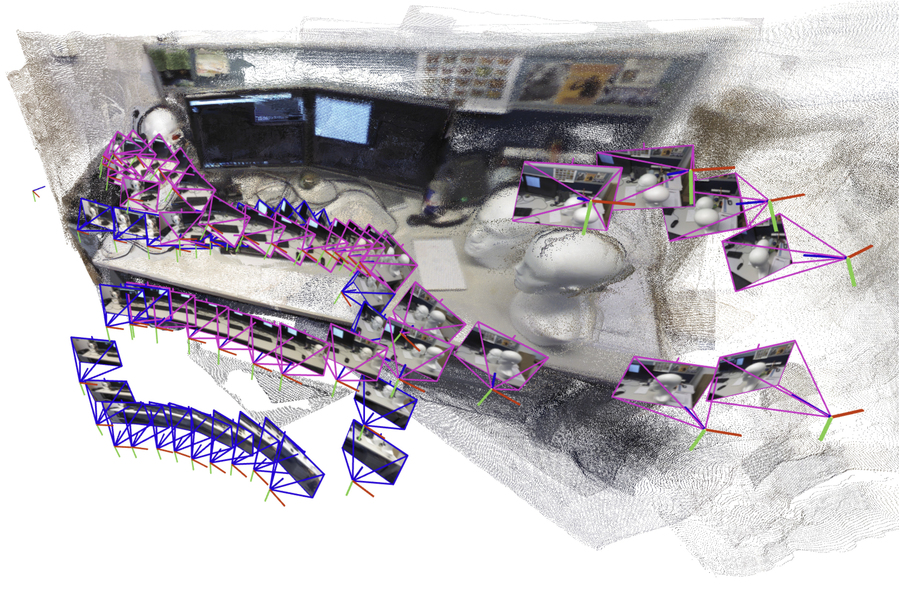Your organization is already hiring digital workers. Now, the question is whether IT is actually managing these “people-like” systems as part of the workforce, or as just another application in the tech stack.
Far from just another AI tool, AI agents are becoming digital coworkers that need the same lifecycle management as human employees: onboarding, supervision, performance reviews, and eventually, responsible decommissioning.
Many companies are already deploying agents to handle customer inquiries, process invoices, and make recommendations. The mistake is treating agents like software instead of managing them like team members.
IT is the natural leader to take on this “human resources for AI agents” role, managing agents’ lifecycle proactively versus inheriting a mismanaged system later. That’s how organizations move beyond pilots and manage agent lifecycles responsibly — with IT leading in partnership with business and compliance teams.
This is Post 3 in our Agent Workforce series, exploring how IT is well-positioned to manage agents as workforce assets, not just technology deployments.
Why IT is becoming the new HR for AI agents
AI agents are already steering IT into an expanded role. Just as HR oversees the employee lifecycle, IT is beginning to take ownership of managing the complete journey of AI agents:
- Recruiting the right talent (selecting appropriate agents)
- Onboarding (integrating with enterprise systems)
- Supervising performance (monitoring accuracy and behavior)
- Training and development (retraining and updates)
- Offboarding (decommissioning and knowledge transfer)
HR doesn’t just hire people and walk away. It creates policies, sets cultural norms, and enforces accountability frameworks. IT must do the same thing for agents, balancing developer autonomy with governance requirements, much like HR balances employee freedom with company policy.
The stakes of getting it wrong are comparable, too. HR works to prevent unvetted hires that could damage the business and brand. IT must prevent deployment that introduces uncontrolled risk. When business units spin up their own agents without oversight or approval, it’s like bringing on a new hire without a background check.
When IT owns agent lifecycle management, organizations can curb shadow AI, embed governance from day one, and measure ROI more effectively. IT becomes the single source of truth (SSOT) for enterprise-wide consistency across digital workers.
But governance is only part of the job. IT’s larger mandate is to build trust between humans and digital coworkers, ensuring clarity, accountability, and confidence in every agent decision.
How IT manages the digital coworker lifecycle
IT isn’t just tech support anymore. With a growing digital workforce, managing AI agents requires the same structure and oversight HR applies to employees. When agents misbehave or underperform, the financial and reputational costs can be significant.
Recruiting the right agents
Think of agent deployment as hiring: Just like you’d interview candidates to determine their capabilities and readiness for the role, IT needs to evaluate accuracy, cost, latency, and role fit before any agent is deployed.
It’s a balance between technical flexibility and enterprise governance. Developers need room to experiment and iterate, but IT still owns consistency and control. Frameworks should enable innovation within governance standards.
When business teams build or deploy agents without IT alignment, visibility and governance start to slip, turning small experiments into enterprise-level risks. This “shadow AI” can quickly erode consistency and accountability.
Without a governed path to deployment, IT will inherit the risk. An agent catalog solves this with pre-approved, enterprise-ready agents that business units can deploy quickly and safely. It’s self-service that maintains control and prevents shadow AI from becoming a cleanup project later on.
Supervising and upskilling agents
Monitoring is the performance review portion of the agent lifecycle, tracking task adherence, accuracy, cost efficiency, and business alignment — the same metrics HR uses for people.
Retraining cycles mirror employee development programs. Agents need regular updates to maintain performance and adapt to changing requirements, just as people need ongoing training to stay current (and relevant).
Proactive feedback loops matter:
- Identify high-value interactions
- Document failure modes
- Track improvement over time
This historical knowledge becomes invaluable for managing your broader agent workforce.
Performance degradation is often gradual, like an employee becoming slowly disengaged over time. Regular check-ins with agents (reviewing their decision patterns, accuracy trends, and resource consumption) can help IT spot potential issues before they become bigger problems.
Offboarding and succession planning
When a long-tenured employee leaves without proper knowledge transfer, it’s hard to recoup those lost insights. The same risks apply to agents. Decision patterns, learned behaviors, and accumulated context should be preserved and transferred to successor systems to make them even better.
Like employee offboarding and replacement, agent retirement is the final step of agentic workforce planning and management. It involves archiving decision history, compliance records, and operational context.
Continuity depends on IT’s discipline in documentation, version control, and transition planning. Handled well, this leads to succession planning, ensuring each new generation of agents starts smarter than the last.
How IT establishes control: The agent governance framework
Proactive governance starts at onboarding, not after the first failure. Agents should immediately integrate into enterprise systems, workflows, and policies with controls already in place from day one. This is the “employee handbook” moment for digital coworkers. CIOs set the expectations and guardrails early, or risk months of remediation later.
Provisioning and access controls
Identity management for agents needs the same rigor as human accounts, with clear permissions, audit trails, and role-based access controls. For example, an agent handling financial data needs different permissions than one managing customer inquiries.
Access rights should align to each agent’s role. For example:
- Customer service agents can access CRMs and knowledge bases, but not financial systems.
- Procurement agents can read supplier data, but can’t modify contracts without human approval.
- Analytics agents can query specific databases, but not personally identifiable information.
The principle of least privilege applies equally to digital and human workers. Start off extra restrictive, then expand access based on proven need and performance.
Workflow integration
Map workflows and escalation paths that define when agents act independently and when they collaborate with humans. Establish clear triggers, document decision boundaries, and build feedback loops for continuous improvement.
For example, an artificial intelligence resume screener might prioritize and escalate top candidates to human recruiters using defined handoff rules and audit trails. Ultimately, agents should enhance human capabilities, not blur the lines of accountability.
Retraining schedules
Ongoing training plans for agents should mirror employee development programs. Monitor for drift, schedule regular updates, and document improvements.
Much like employees need different types of training (technical skill sets, soft skills, compliance), agents need different updates as well, like accuracy improvements, new capability additions, security patches, and behavioral adjustments.
Retirement or decommissioning
Criteria for offboarding agents should include obsolescence, performance decline, or strategic changes. Archive decision history to preserve institutional knowledge, maintain compliance, and inform future deployments.
Retirement planning isn’t just turning a system off. You need to preserve its value, maintain compliance, and capture what it’s learned. Each retiring agent should leave behind insights that shape smarter, more capable systems in the future.
Tackling AI lifecycle management challenges
Like HR navigating organizational change, IT faces both technical and cultural hurdles in managing the AI agent lifecycle. Technical complexity, skills gaps, and governance delays can easily stall deployment initiatives.
Standardization is the foundation of scale. Establish repeatable processes for agent evaluation, deployment, and monitoring, supported by shared templates for common use cases. From there, build internal expertise through training and cross-team collaboration.
The DataRobot Agent Workforce Platform enables enterprise-scale orchestration and governance across the agent lifecycle, automating deployment, oversight, and succession planning for a scalable digital workforce.
But ultimately, CIO leadership drives adoption. Just as HR transformations rely on executive sponsorship, agent workforce initiatives demand transparent, sustained commitment, including budget, skills development, and cultural change management.
The skills gap is real, but manageable. Partner with HR to identify and train champions who can lead agent operations, model good governance, and mentor peers. Building internal champions isn’t optional; it’s how culture scales alongside technology.
From monitoring systems to managing digital talent
IT owns the rhythm of agent performance (setting goals, monitoring outcomes, and coordinating retraining cycles). But what’s truly transformative is scale.
For the first time, IT can oversee hundreds of digital coworkers in real time, spotting trends and performance shifts as they happen. This continuous visibility turns performance management from a reactive task into a strategic discipline, one that drives measurable business value.
With clear insight into which agents deliver the most impact, IT can make sharper decisions about deployment, investment, and capability development, treating performance data as a competitive advantage, not just an operational metric.
Getting AI agents to operate ethically (and with compliance)
The reputational stakes for CIOs are enormous. Biased agents, privacy breaches, or compliance failures directly reflect on IT leadership. AI governance frameworks aren’t optional. They’re a required part of the enterprise infrastructure.
Just as HR teams define company values and behavioral standards, IT must establish ethical norms for digital coworkers. That means setting policies that ensure fairness, transparency, and accountability from the start.
Three pillars define digital workforce governance:
- Fairness
Prevent discrimination and systemic bias in agent behavior. HR upholds equitable hiring practices; IT must ensure agents don’t exhibit bias in their decision-making. Regular audits, diverse testing scenarios, and bias detection tools should be standard.
- Compliance
Compliance mapping to GDPR, CCPA, and industry-specific regulations requires the same rigor as human employee compliance training. Agents handling personal data need privacy safeguards; financial and healthcare agents require sector-specific oversight.
- Explainability
Every agent decision should be documented and auditable. Clear reasoning builds trust, supports accountability, and enables continuous improvement. As HR manages employee performance and conduct issues, IT needs parallel processes for digital workers.
When people understand how agents operate — and how they’re governed — trust grows, resistance falls, and adoption accelerates.
Preparing today’s IT leaders to manage tomorrow’s AI teams
A strong ROI comes from treating agents as workforce investments, not technology projects. Performance metrics, compliance frameworks, and lifecycle management then become competitive differentiators, rather than overhead costs.
AI agents are the newest members of the enterprise workforce. Managed well, they help IT and business leaders:
- Scale without proportional headcount increases
- Enforce consistency across global operations
- Streamline routine tasks to focus on innovation
- Gain agility to respond to market changes
AI agents are the future of work. And it’s IT’s stewardship that will define how the future unfolds.
Learn more about why AI leaders choose DataRobot to help them build, operate, and govern AI agents at scale.
The post IT as the new HR: Managing your AI workforce appeared first on DataRobot.




 , is built to work with people in their existing environments, without disrupting their workflows. Anthony has a career spanning over 30 years at the intersection of robotics, AI, and business. An MIT-trained roboticist, he was part of the founding team at Sapient, held leadership roles at Activision, and has built multiple startups, bringing a unique blend of technical depth and operational scale to human-centered automation.
, is built to work with people in their existing environments, without disrupting their workflows. Anthony has a career spanning over 30 years at the intersection of robotics, AI, and business. An MIT-trained roboticist, he was part of the founding team at Sapient, held leadership roles at Activision, and has built multiple startups, bringing a unique blend of technical depth and operational scale to human-centered automation. The artificial intelligence-driven system incrementally creates and aligns smaller submaps of the scene, which it stitches together to reconstruct a full 3D map, like of an office cubicle, while estimating the robot’s position in real-time. Image courtesy of the researchers.
The artificial intelligence-driven system incrementally creates and aligns smaller submaps of the scene, which it stitches together to reconstruct a full 3D map, like of an office cubicle, while estimating the robot’s position in real-time. Image courtesy of the researchers.